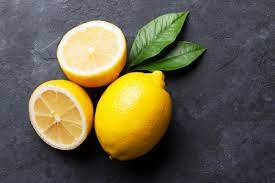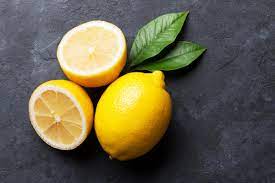The only difference between a corn and a callus is this: Corns appear on the tops of feet and between the toes, whereas calluses appear on the ball or bottom of the foot. It’s a thick tissue that grows over pressure points in both circumstances. Both are frequently caused by hammer toes that lead to corns and irregularities along the foot’s bones, causing calluses. Almost always, they’re linked to some sort of anomaly. So, it’s essential to treat hammer toes to prevent other issues.
Corns and calluses can be treated at home with over-the-counter medications, according to Giurini, but they often reappear (unless you fix the structural problem). In the interim, try these solutions to help you deal with the problem.
1. Lemon
Lemons contain an acid that can aid in the removal of corns. Cut a slice of lemon peel approximately an inch long and place on the breadth of your toe before retiring to bed. Cover the corn with the pith overnight, fastening it with a bandage and a white cotton sock. Continue every night until the corn is completely gone.
2. Epsom salts
To get rid of calluses, put a handful of Epsom salts in a warm water basin and soak your feet for around 10 minutes. Once the dead skin has relaxed, file down the layers with a callus file or pumice stone. After a bath or shower, rub the callus down a little more each day.
3. Castor oil
Here’s how to get rid of corns on the toes in particular: place an O-shaped non-medicated corn pad around the corn. Apply a few drops of castor oil on the corn with a cotton swab, then wrap it with adhesive tape to keep it from moving. If the castor oil oozes through, wear old socks. Remember that, like apple cider vinegar, castor oil contains an acid that can irritate normal skin, so use it only on the corn.
4. OTC
If you’re having problems seeing improvements with home cures, consider a salicylic acid-based over-the-counter cream for corns and calluses. Remember to keep the solution on the thick skin itself rather than rubbing it all over.
5. Pumice stone
Corns and calluses can be easily removed by shaving them down. Soak your feet in warm water for 10 minutes, then rub the region with a pumice stone.
6. Baking soda
Baking soda works in the same way that aspirin does to help you shave off your thick skin. To make a paste, combine it with water and rub it into your skin.
7. Aspirin
Here’s how to use a pain reliever to get rid of corns: Mix equal amounts apple cider vinegar and water with five or six uncoated aspirin tablets. Once you’ve added enough to make a paste, apply it to a corn or callus and secure it with a bandage. The lump should be loose enough to rub off with a pumice stone after at least ten minutes. Because this is one of the more potent acid combinations, make sure you only use it on corns and calluses—do not use it on healthy skin.
8. Apple cider vinegar
Most over-the-counter creams contain an acid (usually salicylic acid) that dissolves the thick skin and aids in the removal of the additional layer. In a similar way, that’s how apple cider vinegar works. To let it soak in, dab it on with a cotton ball or hold it on the rough region for a few minutes. One thing to keep in mind: acids don’t differentiate between thickened and regular skin. As a result, irritation is a possibility. These should not be used by diabetics since they may produce a sore that does not heal. When using any acid, use caution and attempt to keep it to the affected region only. Stop using the treatment if your skin becomes red, irritated, or burns.

